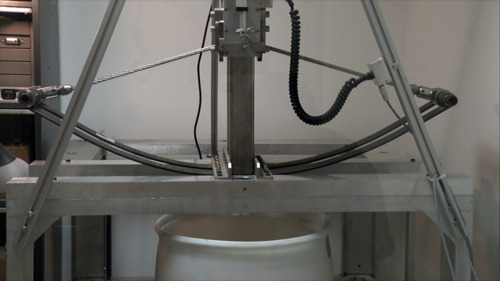NASA is building a harpoon to shoot at comets. Hell yeah.

If you ever doubted that working somewhere like NASA would be one of the coolest jobs ever, consider that they’ve proposed a harpoon to shoot at the heart of a comet to try and extract its secrets. One day, a buch of astronomers were sitting around like “How can we get material from the heart of a comet?” and another was like “Let’s shoot one with a harpoon!” And so that’s what they’re gonna do.
To that end, the Goddard lab now houses a monstrous six-foot-long crossbow, with a bow made from a pair of truck carriage springs, and a string made from a half-inch-thick steel cable. This industrial-strength ballista can generate a level of force up to 1,000 pounds.
The engineers only point the bow towards the floor, for safety reasons. “It could potentially launch test harpoon tips about a mile if it was angled upwards,” said NASA’s Bill Steigerwald in a press release.
The engineers are also building a special arrow, with a collection chamber secreted away inside a hollow tip. “It has to remain reliably open as the tip penetrates the comet’s surface, but then it has to close tightly and detach from the tip so the sample can be pulled back into the spacecraft,” explains Donald Wegel, lead engineer on the project.
During tests, the harpoon can penetrate a 250 liter drum of dirt. These are materials you’d likely find on a comet. Things like sand, salt, pebbles or a mixture of the lot. “We’re not sure what we’ll encounter on the comet — the surface could be soft and fluffy, mostly made up of dust, or it could be ice mixed with pebbles, or even solid rock,” says Wegel.
Comets — frozen balls of ice and dust, which are cosmic leftovers from our solar system’s birth — are an interesting prospect for research. Nasa’s Stardust mission previously found amino acids in various carbon-rich meteorites and samples of the comet Wild 2. These molecules are needed to build proteins, and are a key ingredient to making life.
That research gave credence to the theory that some of the building blocks of life on Earth were seeded from space, on comets. “One of the most inspiring reasons to go through the trouble and expense of collecting a comet sample is to get a look at the ‘primordial ooze’ — biomolecules in comets that may have assisted the origin of life,” Wegel said in the release.




Notes